fertilizing A tasty strawberry berry is found in almost every summer residence. It is popular with many gardeners, because it multiplies easily, has a pleasant taste, is rich in many useful substances and vitamin C. However, this berry requires care. If they are neglected, the harvest will not be so abundant. Most beginning gardeners do not know how to water strawberries. But the fruiting and flowering depend on the characteristics of irrigation, so it is necessary to approach this process correctly.
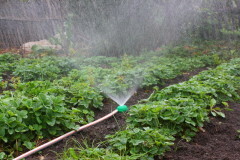
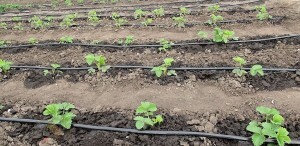
Features
This berry - a plant very hygrophilous. The right amount of water helps to get accustomed to new seedlings. It is very important to avoid stagnation of water. If the bed is a large swamp, the roots can rot, and the plant will die. That is why it is so important to find the right balance.
To understand how to properly water a strawberry, it is worth familiar with the peculiarities of the structure of its root system. The garden strawberry roots are small, therefore located in the upper layers of the soil. Because of this, the berry simply can not get its own moisture from the deep layers of the earth. Therefore, the soil must be monitored. As soon as it dries, it is necessary to moisten it again.
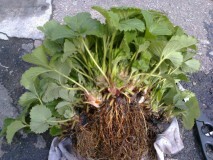 the roots of the strawberry are short and require sufficient irrigation
the roots of the strawberry are short and require sufficient irrigation 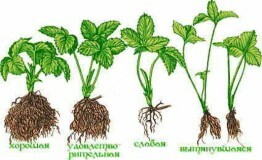 kinds of the root system of the strawberry
kinds of the root system of the strawberry Can it be poured cold water?
This question is often asked by beginners summer residents. Typically, water for irrigation is stored in many areas right on the street. For this, barrels or tubs are used. During the night the water cools down in them, and during the day it does not always manage to get warm. Cold water is better not to water the berry: this will have a bad effect on the root system. She will be weakened. It is recommended to heat the water for irrigation or at least put the tubs on a sunny place.
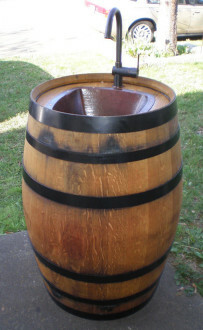 irrigation tub
irrigation tub  irrigation barrel
irrigation barrel How many times do I water?
- Watering begins in the middle of spring. It is better to do this in late April - early May.
- In mid-late May and watering the plant in summer less often, 3-4 times a month is enough.
- In August and September, the number of water procedures is reduced to two. In October, only once will be enough.
Watering with flowering and fruiting
Special care requires blooming. During this period, moisture is very necessary for seedlings.
Water in the drip method is fed directly to the root system of plants. Thus, the crust does not form on the soil surface, and the soil always remains moist. For such a system, it is necessary to use a pressure regulator, a pump, pipes, drip tapes and droppers. The whole structure forms a convenient irrigation system, in which flowering plants need so much.
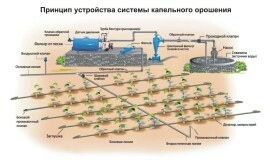

If there is no possibility to use drip irrigation, it will be necessary to be content with the traditional way. But even in this case, the water should not be cold. Therefore, it is necessary to warm it up. As moisture evaporates quickly on hot days, bundles with straw should be spread on the surface of the earth. This technique is called mulching. Straw will also replace straw.
Fertilization period also requires competent irrigation. A plant that forms fruits needs a lot of water. Usually berries ripen in June. If at this time there is a strong heat, you need to keep moisture in the soil and mulch the plants safely with straw, pine needles or hay. This not only protects seedlings from dehydration, but also prevents the growth of weeds.
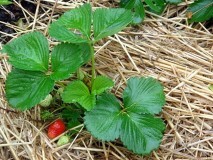 straw mulch
straw mulch  softwood mulch
softwood mulch General rules
Watering must always be combined with loosening of the soil, since the roots must be supplied with oxygen. Loosening helps to nourish the roots, which will lead to a good harvest.
Provide moisture to the plant regularly. But this does not mean that you have to carry heavy buckets every evening. The big role in supply of a strawberry with a moisture the weather plays. If the month turned out to be rainy and there are precipitation every day, it is worth covering the bushes with a special film for plants. This will prevent the development of fungal diseases, as well as protect plants from decay.
If the spring turned out to be rainy, you can start watering the strawberries later. If the precipitation was not enough, you should do the first watering at the end of April. An important rule: a light loose soil requires less water. But heavy soils are in great need of moisture.
Features of irrigation
- It is better to start irrigation in the early hours. By evening the bushes should already dry out. It is worth taking care of the water temperature in advance. For example, water can be heated. Fill the bushes do not need, usually it leads to diseases and decay of the root system.
- After watering the soil should be loosened, otherwise a crust forms on the surface, and air access to the roots is blocked. Do this not only after artificial irrigation, but also after the rain. It is better to carry out also mulching.
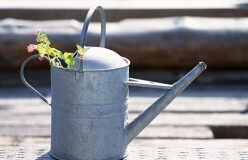 after watering
after watering 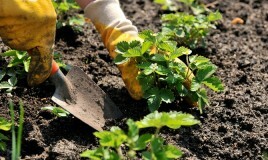 loosen the ground
loosen the ground
- Special attention and careful watering requires just planted shrubs. You should prepare 0.5 liters of water per seedling. So that they grow well and quickly become accustomed, you should water them 3 times a day for two weeks.
- After this time, reduce the frequency of watering.
- While the plants have not yet begun to bloom, sprinklers can be used. But the appearance of flowers requires careful irrigation and drip irrigation. In this case, the moisture should be directed to the roots.
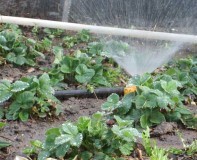 watering before flowering
watering before flowering 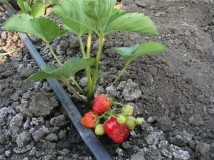 during flowering and fruiting
during flowering and fruiting
- During the appearance of the fruit, drip irrigation does not stop. However, its frequency should be determined independently. You need to focus on precipitation: if there are many, you can reduce the amount of moisture. Everything depends on the area: arid places and soils require much more moisture.
- Rare, but abundant moisture intake is much more useful. Frequent, but weak watering does not bring results.
Important nuances of
- Ripening time of berries requires a lot of water. Usually this period is combined with hot weather, so it is worth pouring plants intensively.
- Drip irrigation should also be done carefully. If you plan to get several crops in one season, it is necessary to remove all the remaining ripened fruits before irrigation, otherwise they can rot. During this period it is very easy to disrupt the process of fruiting.
- Berries are strongly recommended to be protected from contact with moist soil. You can do this with straw or needles. This method helps to prevent the appearance of fungus.
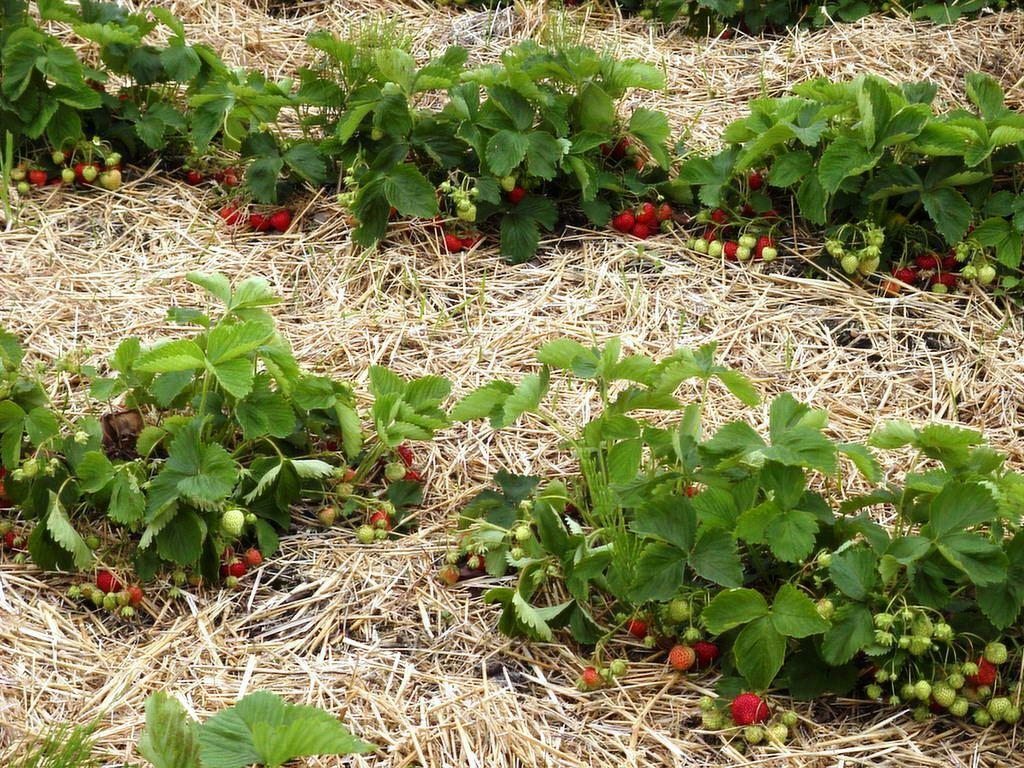
- You need to water the bushes even after harvesting. This will ensure the formation of flower buds.
Basic irrigation methods
- In garden stores, you can find advanced irrigation systems. However, they are not cheap, so not all can buy them. The old proven watering can also be used. She has only one drawback: it requires a lot of physical effort.
- But watering the seedlings from the hose is not recommended. On hot days, the water in it is too warm, and watering strawberries with hot water is harmful. In this case, such a device has a strong head. It can damage fragile bushes.
- Very convenient and mobile sprinkler systems.
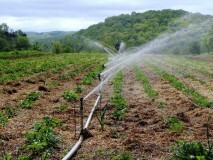 sprinkling
sprinkling 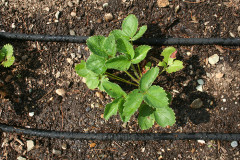 drip irrigation
drip irrigation
- Drip irrigation is considered the most suitable method. It preserves the structure of the soil, which in the future will protect it from frost and severe cold.
Watering in combination with additional fertilizing
You can also fertilize plants even during watering. Strawberries are very fond of minerals. They help it grow better and bear fruit well. Various fertilizing kills pests and prevents the development of diseases. But do not overdo it: fertilizers are good in moderation.
- Manganese is an excellent antiseptic. It is actively used in medicine. You can use it in gardening. In this case, manganese takes a large part in many processes of oxidation, metabolism, respiration of cells.
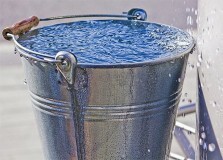 10 l.
10 l.  water 3 grams
water 3 grams 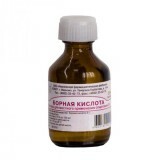 Manganese bare boric acid
Manganese bare boric acid The implementation of strawberry potting irrigation can be done in warm spring early days. It is necessary to take 10 liters of water and dilute in it 3 g of potassium permanganate. You can add a little bit of boric acid. All mix well. Thoroughly sprinkle not only the bushes, but also the earth. It is important to adhere to a predetermined proportion.
- Often the plant is affected by weevil and gray rot. Iodine will help to get rid of these misfortunes. Make the treatment you need during budding. To do this, take 0.5 teaspoon of iodine per 10 liters of water, mix and water the plant.
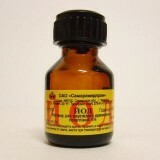 0.5 teaspoon iodine
0.5 teaspoon iodine 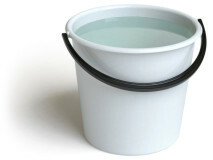 10 liters of water
10 liters of water
Another excellent fertilizer is whey. If the gardener contains a cow, he is very lucky, because there is a whey from the processing of milk. It can be safely put into action. Spray the plant with serum. It is rich in useful substances: it contains nitrogen, calcium, phosphorus. Such feeding will allow you to forget about pests and diseases for a long time.
It is very important to properly water strawberries. Only then it will be possible to achieve not just a good, but an abundant harvest. Proper care will allow the plant to please its owners with juicy berries every season.
Related videos:
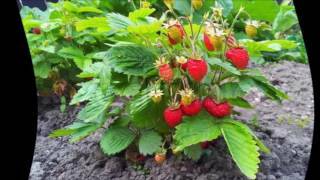 1:19
1:19  5:26
5:26 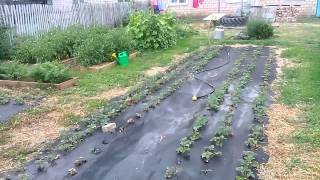 1:12
1:12 